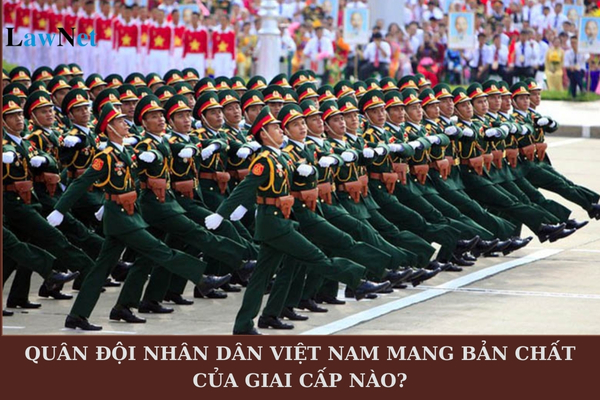What is the class whose nature is inherited by the Vietnam People's Army? What are the objectives of the general education program for History at the upper secondary level?
What is the class whose nature is inherited by the Vietnam People's Army?
The Vietnam People's Army inherits the nature of the working class while also possessing deep national and people's natureistics. This is derived from the principle of building the army according to Ho Chi Minh's ideology and the leadership of the Communist Party of Vietnam.
The working-class nature of the Vietnam People's Army is exhibited through:
- Political objectives and ideals: The Vietnam People's Army is always loyal to the leadership of the Communist Party of Vietnam, aiming to protect the nation, and the people, and uphold socialist policies.
- Discipline and organization: It is tightly organized and strictly disciplined in the style of the working class, combined with the patriotic tradition and the spirit of national unity.
- Close ties with the people: The army is the "people's army," close, attached, and serving the interests of the people.
Note: The content is for reference purposes only!

What is the class whose nature is inherited by the Vietnam People's Army? What are the objectives of the general education program for History at the upper secondary level? (Image from the Internet)
What are the objectives of the general education program for History at the upper secondary level in Vietnam?
According to Section III of the general education program for History issued in conjunction with Circular 32/2018/TT-BGDDT, amended by Article 2 Circular 13/2022/TT-BGDDT, the objectives of the general education program for History at the upper secondary level in Vietnam are as follows:
The general education program for History helps students develop historical competence, a manifestation of scientific competence formed at the lower secondary level; contributes to educating the spirit of nationalism, patriotism, the good traditional values of the nation, the cultural essence of humanity, and the qualities and capacities of Vietnamese citizens, as well as global citizens, in harmony with the trend of the times;
The general education program for History assists students in approaching and clearly understanding the role and natureistics of historical science and the interconnection between history and other scientific fields and professions, laying the foundation for students to orient their future career paths.
What are the orientations to the methods of forming and developing historical competence in Vietnam?
Under Section VI of the general education program for History issued in conjunction with Circular 32/2018/TT-BGDDT, amended by Article 2 Circular 13/2022/TT-BGDDT, the orientations to the methods of forming and developing historical competence in Vietnam are as follows:
- The formation and development of historical competence are executed on the foundation of the basic principles of historical science: through various historical sources to recreate history authentically and objectively, reconstructing the formation and development processes of historical events while situating these development processes in interactions with related factors throughout their dynamics.
- Teaching history subjects using active learning methods, where teachers focus less on imparting historical knowledge and more on guiding students to recognize and exploit historical sources. This helps students reconstruct the past, understand history, and make inferences and evaluations about the context, origins, and development of historical events for scientific truth discovery, applying historical knowledge into practice, thereby forming and developing historical competence.
- The competence-oriented history teaching method emphasizes problem discovery and solving, using visual aids (historical artifacts, historical images, maps, charts, models, historical documentary films, etc.). Teachers assist students in exploring and analyzing historical events and processes, drawing independent conclusions and evaluations, thereby developing lifelong historical self-learning and applying historical socio-cultural knowledge of Vietnam and the world.
- The forms of organizing history teaching include activities both inside and outside the classroom. Teachers should enhance field teaching settings (historical sites, cultural heritage, museums, exhibitions, etc.), integrating classroom teaching with real-experience activities. By combining diverse activities such as group discussions, group work, individual work, etc., teachers help students become "historical role players" to explore history, and creatively apply knowledge to learning situations and real-life.
- To enhance the effectiveness of history education, it is crucial to integrate school-based history education with family and societal contexts. The cooperation between the three educational environments (school, family, society) is a vital foundation for forming historical competence. Teachers need to actively establish and maintain regular connections with families and society in history education through cooperation models such as organizing traditional historical education activities and educating students about national sovereignty with the involvement of parents and social organizations.
- The general education program for History emphasizes the application of information and communication technology; encourages students to independently search for and collect historical materials online, in libraries, and other database systems for individual or group research; and develops skills in using information technology to support historical research, understanding, and study.

